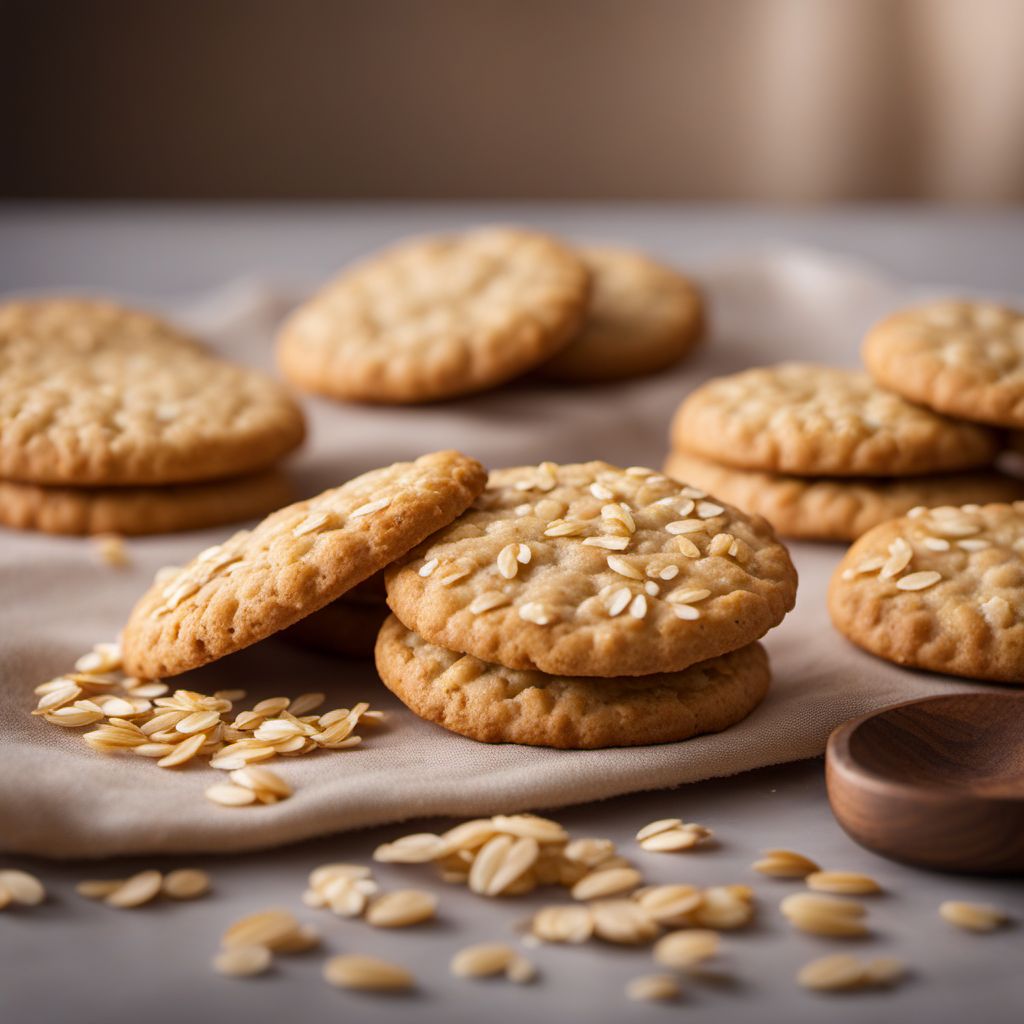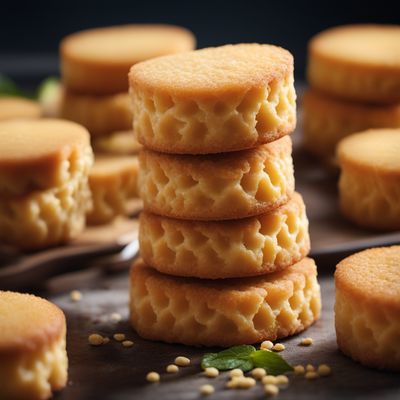
Ingredient
Biscuits, oat meal
Oatmeal: The Versatile Breakfast Staple
Oatmeal, made from hulled oat grains, is a coarse flour that boasts a nutty flavor and a creamy texture when cooked. It has a beige color with a slightly grainy appearance. Oatmeal is known for its ability to absorb liquid, making it ideal for creating thick and hearty dishes.
Origins and history
Oatmeal has been cultivated for thousands of years and has its roots in ancient civilizations such as the Egyptians and Greeks. It gained popularity in Scotland and Ireland, where it became a dietary staple. Oatmeal has since spread worldwide and is now enjoyed in various cultures for its nutritional benefits and versatility in cooking.
Nutritional information
Oatmeal is a nutrient-dense ingredient that is rich in fiber, protein, and essential minerals such as manganese, phosphorus, and magnesium. It is also a good source of antioxidants and beta-glucan, a type of soluble fiber known for its cholesterol-lowering properties.
Allergens
May contain traces of gluten, as oats can be cross-contaminated during processing. Individuals with gluten intolerance or celiac disease should opt for certified gluten-free oatmeal.
How to select
When selecting oatmeal, look for whole grain options that are minimally processed and free from added sugars or artificial flavors. Opt for steel-cut or rolled oats for a heartier texture, or choose instant oats for quicker cooking times. Check the packaging for any certifications, such as gluten-free or organic, if desired.
Storage recommendations
To maintain the freshness of oatmeal, store it in an airtight container in a cool, dry place away from direct sunlight. Avoid storing it near strong-smelling ingredients, as oatmeal can absorb odors. Proper storage will help preserve its flavor and prevent moisture absorption.
How to produce
Oatmeal can be easily grown at home by sowing oat seeds in a well-drained soil and providing ample sunlight and water. However, commercial production is more commonly done on a larger scale in specialized oat-growing regions.
Preparation tips
To prepare oatmeal, combine the desired amount of oats with liquid (such as water or milk) in a saucepan and cook over medium heat, stirring occasionally, until the oats have absorbed the liquid and reached the desired consistency. Add sweeteners, fruits, nuts, or spices to enhance the flavor. Oatmeal can also be used in baking recipes, such as cookies, muffins, and breads, adding a wholesome touch to the final product.
Substitutions
Quinoa flakes, amaranth flakes, or buckwheat flakes can be used as substitutes for oatmeal in recipes that require a similar texture and nutritional profile. However, keep in mind that the flavor may vary slightly.
Culinary uses
Oatmeal is a versatile ingredient that can be used in a wide range of culinary applications. It is commonly enjoyed as a warm breakfast porridge, but it can also be used to make granola bars, cookies, bread, and even savory dishes like oat-crusted chicken or meatloaf. Oatmeal is a popular addition to smoothies, providing a creamy and nutritious base.
Availability
Oatmeal is widely available in grocery stores and supermarkets worldwide. It is cultivated in countries such as the United States, Canada, Russia, Australia, and various European countries.
More ingredients from this category

Butter biscuits
Buttery Delights

Sponge biscuits
Featherlight Delights: Exploring the World of Sponge Biscuits

Biscuits, chocolate
Decadent Delights: Exploring the World of Chocolate Biscuits

Biscuits, spelt meal
The Wholesome Alternative: Spelt Meal Biscuits

Biscuits, sweet, wheat wholemeal
Indulgent Delights: Discovering the World of Wholemeal Sweet Biscuits

Speculaas
"The Irresistible Dutch Delight: Speculaas - A Spiced Cookie with a Rich History"